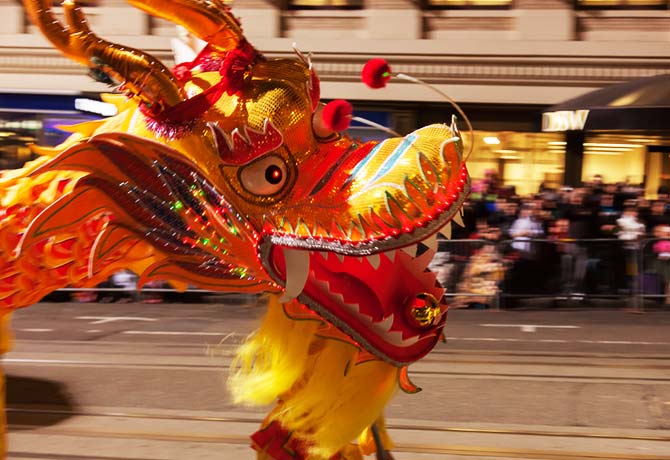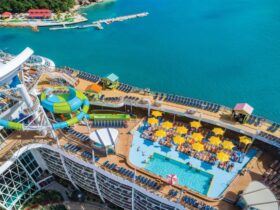As the Lunar New Year approaches, we discover more about Chinese culture and interesting Chinatowns overseas
It is amazing that in countless cities around the world there exists an entire area dedicated to Chinese culture.
In some cities, the “Chinatown” is one of the top attractions or is deeply intertwined with the history of the city.
Last year, we looked at how the Lunar New Year is celebrated around the world. Now, we look at some of the most incredible Chinatowns in the world.
MOST FAMOUS: SAN FRANCISCO, USA

San Francisco’s Chinatown is reportedly this city’s top tourist attraction, drawing more people each year than the iconic Golden Gate Bridge. (Photo: Mariusz S. Jurgielewicz / Shutterstock.com)
San Francisco’s Chinatown is probably the most renowned of them all. It is North America’s largest and oldest, and the biggest one outside of Asia.
It’s reportedly the city’s top tourist attraction, drawing more people each year than the Golden Gate Bridge. Comprising 41 alleys running through 22 blocks, it has lived through 150 interesting years. For one, Spofford Alley was where Sun Yat-Sen plotted the overthrow of China’s last dynasty.
Meanwhile, the dark side of the city’s past seems to have dissipated with time but poignant places remain. Nob Hill was once the opium hub and Ross Alley hosted gambling dens.
Today, Chinatown is famous for Asian food. The city’s best dim sum can be found at City View.
The Lunar New Year brings a burst of colour and vibrancy, especially in the Flower Fair and New Year Parade where a huge dragon dances down the street.
For the full San Francisco Chinatown experience, book a walking tour. Most of them begin on Grant Avenue.
MOST SURPRISING: HAVANA, CUBA

Havana’s Chinatown, Barrio Chino, is the hub of a sizeable Cuban-Chinese population. (Photo: The Visual Explorer / Shutterstock.com)
In the heart of Cuba, off America, one would be surprised to suddenly catch Chinese conversations in the air. If you do, you might’ve ended up in Barrio Chino, Havana, once the largest Chinatown in Latin America. It began in the 1840s with immigrants from Guangdong, China.
Havana, capital of Cuba, used to be home to as many as 50,000 Chinese people before the 1959 Cuban Revolution, which caused the collapse of private enterprises. Since then, the Chinese government has sponsored the rejuvenation of Havana’s Chinatown and it is today the hub of a sizeable Cuban-Chinese population.
Havana’s Chinatown has on display an impressive Chinese-language Kwong Wah Po newspaper printed on a 110-year-old printing press, with some 6,000 characters that have to be set by hand!
MOST NOSTALGIC: BANGKOK, THAILAND

Bangkok’s Chinatown, especially by night, is reminiscent of Hong Kong in the 1960s.
Would you like to experience 1960s Hong Kong? Try visiting Bangkok. By night, the 200-year-old Chinatown in Bangkok resembles that era of Hong Kong, with its low-rise buildings hiding energetic back-alley markets, steaming street food and glittering gold shops, all lit in the glow of neon signs in Thai and Mandarin.
Bangkok’s Chinatown is known locally as Yaowarat. The best way to get there would be by walking from Hualumphong MRT or the Ratchawong river taxi pier.
The main draw of this bustling market is, naturally, its food. The easiest way to enjoy every variety is to sign up on the Bangkok Food Tours’ Chinatown Foodie Walk. This guided tour will bring you to the most famous eateries here, from street food to fine dining, as well as religious and cultural landmarks in the area.
Look out in particular for the Golden Buddha at Wat Traimit, the world’s largest solid gold statue made in the
13th century.
MOST SPECTACULAR: MELBOURNE, AUSTRALIA

Dai Loong, one of the world’s longest dragons, parades down the streets of Melbourne’s China-town during the Lunar New Year. (Photo: Alpha / flickr.com)
Founded in 1851, Melbourne’s Chinatown has quite a colourful history as well. Droves of Chinese from South China and Hong Kong built up a vibrant community in Little Bourke Street, leading to a boom all the way until the introduction of the controversial White Australia Policy in 1901.
After World War II, this policy was relaxed and Melbourne’s Chinatown was reinvigorated. Today, its three-storey brick buildings continue to house Cantonese restaurants, supermarkets and herbal medicine shops.
But what makes this Chinatown a sight to behold are its two major annual events: the Asian Food Festival (from August to September) and the Lunar New Year. During this time of the year, one of the world’s biggest dragons, Dai Loong (meaning “Big Dragon”), parades down the streets of Chinatown.
This leviathan requires 200 people to bring it to life. For the rest of the year, you can catch it slumbering peacefully in the Chinese Museum here.
By Pamela Chow
ADVERTISEMENTS










Leave a Reply